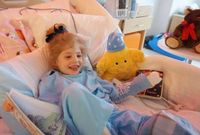For families grappling with ultra-rare childhood diseases, every day can feel like a race against time—a race they’re often losing. Across the United Kingdom and the United States, parents are speaking out about the steep challenges of rare genetic conditions, the slow march of medical progress, and the urgent need for systemic change.
In York, England, Gracie Davies has faced a year she describes as “rough,” but that word hardly does justice to her family’s ordeal. Her three-year-old daughter, Juno, is one of just 18 people in the world living with the rare genetic disorder TRAPPC6B, according to BBC. The diagnosis came in early 2025, following months of developmental delays and learning difficulties that set Juno apart from her peers. “Our life now with a three-year-old isn’t what we expected it would be,” Davies told BBC, reflecting on a reality that diverges sharply from the one she and her husband, Lance Hodgson, envisioned when they became parents.
TRAPPC6B, caused by a mutation inherited from both parents, has left Juno with significant challenges: speech impairment, intellectual disability, and serious mobility issues. Juno cannot walk unaided, must be carried up and down stairs, and needs help with daily tasks as basic as bathing. She uses a walking frame and receives specialist physiotherapy, but even so, her stamina is limited—she can only attend nursery in the mornings before fatigue sets in, which further restricts Davies’s ability to work.
That’s a bitter irony for Davies, who had built a career as a building surveyor specializing in home adaptations for families with disabled children. “It’s quite ironic now because we are actually in the process of applying to do that to our own house,” she remarked to BBC. But when Juno’s care needs became clear, Davies had little choice but to step away from her job. “I didn’t go back to work and I just assumed I would continue my career, but she can’t do a full day of nursery. She just gets too tired.”
The family’s financial strain increased as they became a one-income household. To help cover the costs of Juno’s treatment, they even appeared on BBC’s The Travelling Auctioneers, selling collectibles and heirlooms. Everyday life presented its own set of challenges—Juno, in a moment of toddler mischief, would grab and toss Davies’s glasses, leading to frequent repairs that quickly became a burden. Relief came in May 2025, when Davies received free laser eye surgery through Optical Express’s Thanks a Million campaign, aimed at supporting unpaid carers. “When they got broken, I would have to pay for new glasses, which isn’t great when you’re not earning, so it’s made a really big difference,” Davies explained, describing a small but meaningful improvement in her daily routine.
Juno’s diagnosis came after a lengthy process involving whole genome sequencing, which revealed that both parents carried a change in the same genetic region. The family has since tried to connect with others facing the same condition, but there are only 18 known cases worldwide and just one other in Europe. Davies created a Facebook group for families affected by TRAPPC6B—she remains its sole member, but hopes it will help others in the future. “We’ve recently signed up to a big database so that if anyone else gets diagnosed, they’ll get our details,” she said.
Across the Atlantic, a similar story of struggle and advocacy unfolds. Dr. Cara O’Neill, a pediatrician in the United States, has devoted her career to children’s health. But when her daughter Eliza was diagnosed in 2013 with Sanfilippo syndrome—a fatal childhood neurological disease—O’Neill’s fight became deeply personal. As reported by USA TODAY, Sanfilippo syndrome is relentless, robbing children of their ability to speak, walk, eat, and even sleep. “No parent should have to watch their child lose every skill they once had, but that is the devastating reality of Sanfilippo syndrome,” O’Neill wrote.
Eliza, like many children with rare diseases, faced years of decline while waiting for a clinical trial to open. By the time she enrolled in an early phase trial for Sanfilippo A gene therapy (UX111) nearly three years after diagnosis, she had lost her ability to speak and suffered severe neurological setbacks. “With each delay, the FDA timeclock gets reset. That means months applying for meetings and preparing extensive documents, followed by an FDA review process that normally takes at least six months – that may still result in more delays or denials,” O’Neill explained in USA TODAY.
While Eliza’s speech has not returned, the gene therapy brought meaningful improvements: better communication through other means and restful sleep—small victories that mean everything to her family. This past summer, Eliza, now 15, was able to run on the beach and swim in the ocean, experiences her mother treasures. Other children in the same trial, treated earlier and with higher doses, have achieved milestones once thought impossible for Sanfilippo: playing softball, reading, talking, and enjoying playdates.
The O’Neill family’s journey has fueled a broader campaign for change. In 2025, a coalition led by the Cure Sanfilippo Foundation, which O’Neill co-founded, sent a letter with over 43,000 signatures to the U.S. Food and Drug Administration (FDA), urging the agency to speed up approvals for rare disease treatments. The need is acute: 30 million Americans—half of them children—live with rare diseases, yet 95% of these conditions have no approved treatments. Recent FDA denials of promising therapies have left families in limbo, even as time slips away for children with fatal diagnoses.
There are glimmers of hope. On August 21, 2025, the FDA accepted a new application from Stealth Therapeutics for a drug targeting Barth syndrome, with a decision expected in September. But as O’Neill points out, “patients don’t have time to wait.” For families like hers, every delay risks irreversible decline or even death. “We must move faster than the speed of degenerative diseases and approve drugs that save lives,” she urged.
Both stories—Juno’s and Eliza’s—underscore the immense burdens borne by families facing rare childhood diseases. They also highlight the glaring gaps in support, from financial strain and lack of approved treatments to the emotional toll of watching a child’s abilities slip away. Yet, in the face of adversity, these families have become fierce advocates—not just for their own children, but for the millions of others navigating similar paths.
As doctors, parents, and campaigners continue to push for faster, more compassionate responses from health systems and regulators, their message is clear: time is the most precious resource for children with rare diseases. Every day counts, and for these families, hope lies not just in science, but in the world’s willingness to listen and act.




